The Narrative of Five Nights at Freddy’s
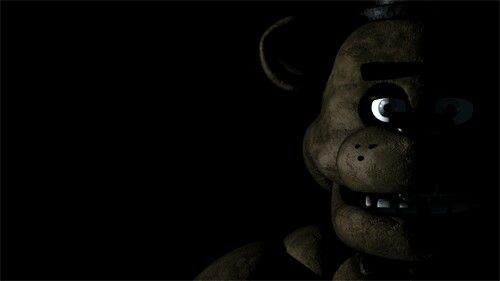
There are few good ways of introducing a game with the immense fan base and viral sensation of Five Nights at Freddy’s, especially to those who have not been involved with the Internet gaming community for the last year. It is not an impressive game at first sight, but with the cartoon style to its designs and implementing the choice of point-and-click mechanics, it justifies for its horror experience that caught fire when popular YouTubers began to advertise for its interesting gameplay. Though the investment into this title grew beyond just that, as another component eventually became the prevalent feature to the franchises widespread success, its powerful narrative.
To some extent, the various releases of new games into this franchise had been made in part to the rousing curiosity of the unique lore presented in Five Nights at Freddy’s, a trait often the sideline quality for other games. For any other reason, however, it is not the content of which defines the special interest into this plot, but is the way that it is presented towards the audience, that will be recognized here. It has been everything to do with the difficulty others have had to provide the satisfactory details and context to describe its narrative, separating away from narratives of other games in comparison. But without personal investment as one of the insiders, it might appear to any viewer on the outside as a little more than anyone can stomach, or hardly worth the time.
Though this should hardly be subject to that bias, and it might be worth the encouragement to explore further into this seemingly forthcoming franchise. The effort here will be to provide an extensive analysis of this fascinating product, and delve to shine greater light upon this dark tale, through a literary perspective on a narrative success.
Five Nights At Freddy’s
From its release on August 8th, 2014, this first-person point-and-click game emerged on the market with a rather straightforward package, as a game that by first impressions had nothing extensive to offer. The horror elements comes in the form of surviving five nights in a gruesome looking pizzeria as its night guard, in which the shifts include holding one’s own against a group of murderous animatronics, as they complete each night by the clock. Management of restricted power enhances the panic of players forced into this environment, and challenges them with several robots on the constant attack, so as either the night comes to end when the player holds out till the morning, or death deliver them from the nightmare. With merely a voice from phone calls to accompany them and provide some “sage” advice or background to the situation, there is little else to indicate much of a story to newcomers of this series.
To become aware of the underlying story in FNAF (abbreviated from Five Nights at Freddy’s) is merely pricking the surface in the untold numbers of ideas and theories deriving of the first installment, and pales to once the sequels complicate the plot further. For every addition the franchise has made, the understanding of the mystery behind it has cast a shadow of doubt in near all corners of thought and reason. Often so much that many speculate that the creator of the games, Scott Cawthon, has generally improvised his way into the current model of this plot. It is an understandable reason; for the number of inconsistencies and loops that are found in the entire span of it, the entire series is based on what seems to be an incomplete story.
Yet, through irrational efforts to unravel this impossible mystery, it is a curious thought that such an impressive feature stamps so fittingly to a popular game, and its critical reception must warrant an explanation for it. As for every installment that took place, it has surprisingly kept well to maintaining a theme of blissful deception and confusion among those who have followed close, and the improvement of gameplay and mechanics has done well to refresh the experience each time. Its captivated audience has also set the standard of fandom across various platforms in gaming, in pay to many YouTubers and gamers whom have done explicable wonders to invest and enrich the product. For every one who participated in solving one of the most difficult pieces of storytelling in gaming, they have contributed, along with Scott Cawthon, to generate an impressive narrative for one of its kind. Here and now, this is where the discovery of this narration will reveal to us the true art of Five Nights at Freddy’s.
The Mystery So Far
Before getting too involved without any context, it is best to start by recognizing key points to later analyze, and provide a decent summary of the grand measure of mystery involved in this franchise.
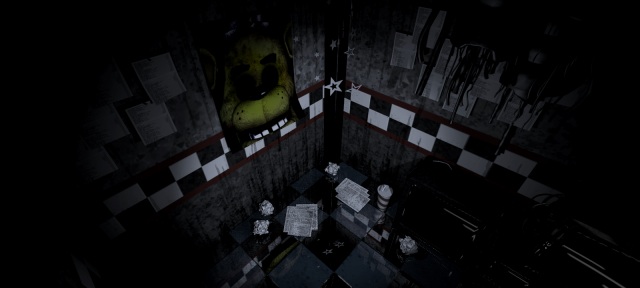
At the core of this game’s lore, the mystery entails the dark history that surrounds “Freddy Fazbear’s Pizza”, in which several events trigger and lead the restaurant into its downfall. The most significant of these are scribbled on posters that change throughout the nights in the first game, and describe the kidnapping and potential murder of five children, suspected to be at the hands of a man who used an empty animatronic suit to accomplish this. Other details include a rotting smell and signs of blood and mucus, evident from the animatronics themselves which threaten the restaurant with health violations. As also noted by a man popularly referred to as “Phone Guy”, who calls on each night of the game, an incident known as “The Bite of ’87” leads to a severe injury of a person’s frontal lobe, due to the malfunction of one of the animatronic characters. Through the long trail of problems the business has endured through, these incidents would chain together to the tragedy and eventual closing of Freddy Fazbear’s Pizza.
As simplistic as that might sound, the depth of sophistication only grows when the sequels play in part, and previously confronted theories and suggestions are thrown amiss at every turn. Take the second installment into the picture, and an upheaval of questions distorts the picture right back with overwhelming information: a sequel that might possibly be a prequel, suggestions of previous Fazbear pizzeria locations, questions to the animatronic responsible for the “Bite of ’87”, and mini-games adding not only levels of detail to the five missing children incident, but revelations of the murderer and other insidious events. Adding the third sequel, taking place thirty years ahead of the original game at a frightening attraction, the shroud of questions only thickens with new information and complications yet again, and inevitably keeps the pieces out of place. Despite the final game meant to conclude to the series, now taking place in the haunting of a child’s bedroom, little resolution is provided to aid in the understanding of this grueling story, and nearly twelve animatronics (not including their replicas and spectral forms) account for the entire series as the antagonists and catalysts for the haunting events in the plot. To simply put, it leaves the community empty handed as they have always been from the start.
Still, for as thin the threads may be, the community behind it has persisted relentlessly to use these parts in filling gaps, and their impressive dedication has survived long since the first installment. Near every notion and perspective of the plot has been considered and reviewed to incredible lengths, such as arguments pestering for months over the true attacker of the “Bite of ’87” incident, from the titular Freddy Fazbear to the Pirate Cove dweller “Foxy”, and with the second installment now suspect of the misshapen machine called “Mangle”, and yet that continues to change. There are almost no angles that has not been glossed over with intense debate, and even at the remote ending with little guarantee for a true answer, the obscurity has kept the name alive in many forums and discussions to date. Popular channels on YouTube, such as The Game Theorists (a link is provided to the channel for convenience), have fought to put an ease of mind to the questions surrounding this, and the careful craft of secrecy continues to be played with excellency, no less in part to the designs of its creator. Relentless as it has been, the attempts to satisfy their desire for closure has been unfruitful, and unfortunately, that may be so for a long time.
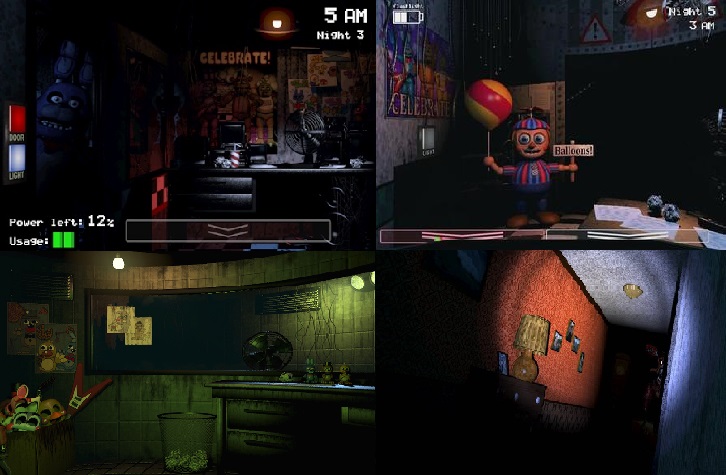
No matter how many games and how many theories, there are no solid answers to the riddles and loose ends. Who is the murderer, coined as the “Purple Guy”? Who is the crying child appearing in Five Nights at Freddy’s 4? What does he have to do with the plot? Who caused the Bite of ’87? How are the enigmatic “Puppet” and “Golden Freddy” figures involved in the entire scheme? What has truly happened in Five Nights at Freddy’s?
An Incomplete Story
There are vast collections of the most detailed, resourceful ideas and opinions directed to this brand of storytelling, with too few ways of exhibiting their importance to one that is FNAF. In many ways, the widespread contribution has pervaded a deep sense of dissatisfaction among those involved, an expression that is gradually gnawing at the viral impact the video game has lead up to, even with the promise of new content by its creator. There may be frustration tied in with the time that passed since the speculations have been pouring in, and yet, there can still be comfort in understanding the reason for this restless curiosity, and the surprising value that keeps this close to mind. However ways the pieces have been aligned and fitted, there is an overall recognition by many that the completion to the plot depends upon the answers the creator might have for them. Of course, the struggle then waits on the time of which it should be released, and despite even that, there is uncertainty as to whether or not he should ever disclose what that could be. The mindset then is, should we fight so relentlessly to only understand so little?
Perhaps all along, that is where our work had begun, and where Scott Cawthon had intended to finish. With the hindsight that one would need for the immense dedication and attention reserved for the lore, it is surprising how well the single creator had managed to extend the length and growth of the plot, and one might consider how thoughtfully he might have considered its design. Though some could take to insult the possibility that it was never meant to carry true depth and clarity in its story, it should be credited for the success that its had through its audience, whereby its lack of consistency has been turned into the enriched narrative shared across its fandom. By that token alone, this is where the value of Five Nights at Freddy’s is not defined for its horror and gameplay, but the involvement so greatly invoked from the community abroad. To put in perspective, though the followers of the franchise might have a broken plot and logical gaps, the efforts brought upon these rogue elements drives a style of narrative heavily engaging its audience, so much as to instigate possibilities not explored by even the creator, and extends ideas much more than FNAF might represent.
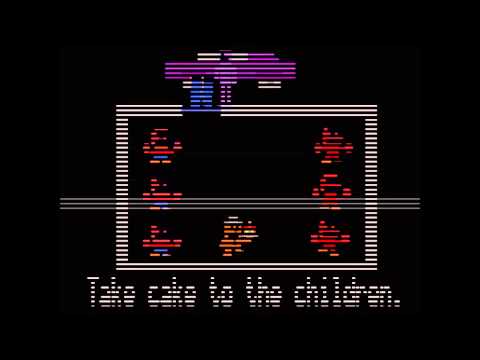
It ends up resulting in critical deconstruction of its narrative pieces; an individual could evaluate certain components to the story, such as the direction of dialogue interacted between characters within the plot, and that simple direction can derail the entire public opinion once instilled in the community. The deciding quality of the product is arguably the participation in speculating, with the widespread curiosity to solve the twisting pieces that composes the plot, it is partial reason for the fan base it possesses. Where the game has done its part to entertain its members with its suspense and horror themes, Scott Cawthon has given life to a story that extends the medium of virtual gaming in the form of speculative, interactive narration.
The “Answer”
There is a question then, as tentatively described, directed to the kind of narrative employed by FNAF with its audience, if one should observe the reactions that are exclusively external to the components of the primary plot. One should consider that the teasing and manipulation of its storytelling might have been the intentional direction that Scott lead for his followers, and through his authority alone, the narrative will only move by its structural boundaries to make the progression necessary, and by that leaves gamers and theorists to futile efforts beyond guessing, without what is given to them by the author. By our genuine understanding of narrative structure, this might be the case, and invalidates the kind of response that the community surrounding the game has and might produce, simply for the incapacity for the audience to engage with the content and affect the outcome of the narrative.
Yet, if this is simply the experience of the audience member, should that be the implicit role besides the interaction of playing the game? Unless, by the design of Five Nights at Freddy’s, the game does offer a sense of leverage to the story; by its lack of narrative structure, Scott offers a measure of control besides what is provided in his own.
In observing the style of the narration, this could be best described as derivative, providing to the audience material that they might expand through their own efforts, while solely generated on the base content that the creator provides. To put simply, it can be seen that the integrity of the plot is to be vague, and is willingly left out of context enough to allow a sense of discovery and disclosure to the mystery, a quality that is precious in that genre. There is enough given by the creator to deliver the impression or understanding of the plot to the community to fabricate by their own terms, deriving a sense of interaction in a story that an author may be willing to indulge his or her audience with. As Scott Cawthon has demonstrated in FNAF, his work has consistently crossed away at bold claims and answers with new sets of revelations and ideas of his own, which drive toward a new narrative for the community to engage with.
Through the game, the focus has remained on engaging the audience through the experience of survival and horror within the various nights, and has delivered the derivative narrative in an obscure outline with which the community must understand on their own. Should this be the narrative employed through this particular game, it must be said about its widespread success, apparent and no less in thanks to the works of the community, even though it remains an unuttered factor by most. In regards then, the gratitude for such accomplishment lies to Scott Cawthon and his genuine work in FNAF, for contributing not only in part to a joyful ride through horror, but to an aspect of gaming that might inspire a direction in narrative for the community to cultivate and spread for years to come.
Welcome to the Party
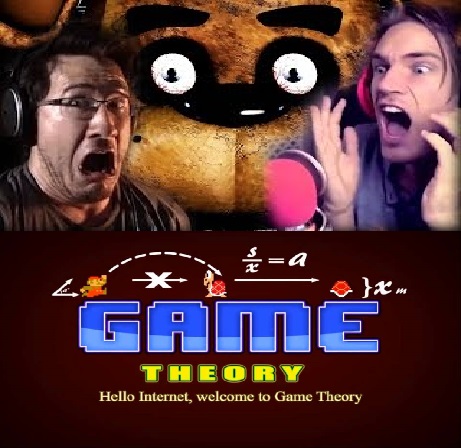
Through Five Nights at Freddy’s, it has given reasons for the audience to question every word the Phone Guy mutters in his uncomfortable speeches. When impending threats lurk in the shadows, they wonder if the animatronics have other devious intentions, besides for their faulty “programming.” For how many fingers lay toward the identity of the Purple Guy, the figure responsible for the haunting in the franchise, not a firm claim can be said with absolute truth, without a certainty to the many accusations made by the community. The level of discovery when the mysterious animatronic suit, referred to as “Golden Freddy”, was unveiled to carry a name and history, instigated profound bafflement, and possibilities roused the conscious of its mystery once again. For the many ways the game could have lived up to its name, no emphasis of fear or level of technicality may match the artistic style that invites the onslaught of questions and answers, and drive such a hard narrative so demanding of its fandom. What better way to refine the shrouded mystique of a haunted pizzeria, than give an audience the power of narrative adventure? There is little doubt for this, even when the answer to the riddle is always out there, and simply out of our hands.
To the rest of those dwindling still on the fascinating lore of this game, it may not appear as the adventure is settling down, though as the primary part of the franchise has come to a close, other avenues open for the possibility for this to continue. The spectacle that has captivated the Internet fan base may whither, for while the audience flocks to the next viral sensation, as many things do for the short duration they have their attention. Yet this is not to assert the true ending of the franchise, and the works that it has left behind mark the impressions that we might see in later material. There is little doubt we will see more from Scott Cawthon, but the unique storytelling presents the format for other creators to carry in the wake of Five Nights at Freddy’s, and grants the opportunities for other narratives to deliver in the way we seldom see in the gaming realm, by immersing us to depths we may not have gone before.
As for those who have kept Five Nights at Freddy’s close and dearest, be gentle; not every franchise ends with a satisfying conclusion. It is not always the way one might imagine, but with a box of secrets and locks (we have not forgotten Scott), we know that will not be going anywhere, but time cannot do much to break those chains. That leaves only the best part of the story to the audience, and it is up to them how they decide to cope with these ends, and resolve the story in their minds. That is the prestige mark of the Five Nights at Freddy’s series; the way Freddy Fazbear will wish you to remember him by.
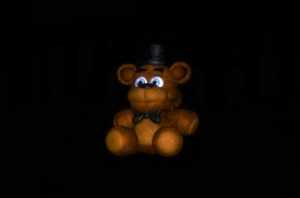
What do you think? Leave a comment.
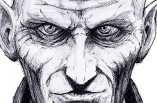



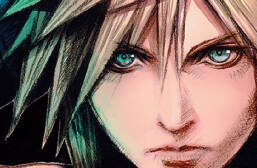
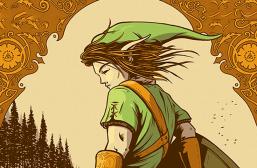


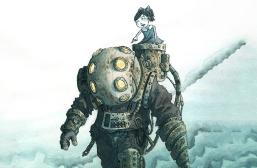


This is an amazing game, right down to the last detail!
This game is one of the first horror games to actually scare me in a long time. And I mean frighten, not startle, although the jump scares are quite startling/well placed.
I LOVE the premise this game holds. The simplicity works but it’s the fact that you’re technically scaring yourself as it’s simply moving images that you jump back and forth on. I really plays on human anxiety and the whole notion that a picture paints a thousand words.
I’ll be honest I don’t really get this game. It has a good atmosphere, but otherwise it’s just based on jumpscares. Once I knew the only scares I’d get were Boos! I kind of got bored of the game. It’s a shame, because it is a unique idea, the characters are creepy as hell, and the atmosphere *is* well done.
Great work explaining FNAF. The four entries into the series are like horror-themed strategy games. I’m intrigued to see where Cawthon goes next. It’s impressive how successful the games have been in such a short span of time. His productivity is astonishing.
Amazing, right down to the last detail.
A unique take on the horror series executed somewhat badly if you ask me.
Could you reiterate on your statement? It is an incredibly vague as to what you are trying to say. I am curious what your intention was behind it.
I kinda hate how in this game, when viewing through the cameras, you can’t really see them movie. The second the camera is on them they turn as stiff as a board and just stand where they’re at. I think it would be creepier if the robots slowly motioned around or just dashed whenever the lights flickered, giving you just enough light to see them run but not enough to scare the hell out of you. Otherwise, this game feels like a pretty cheap chess match where the pieces move around randomly.
I do agree on the technical aspects of the game, considering that is has a very interesting style to it. There have been numerous games born by inspiration to this game, and I notice some do try to change the mechanics around. There is a tendency to follow a pattern in these games, and I understand there is a group of people who feel this is repetitive and unoriginal in the horror aspects. However I am confident that others will improve and expand on the concept in their own unique ways, and bring new elements to the table. For me, the atmosphere and tension has always given me a sense of panic and stress in FNAF, and it is why I appreciate it so much. Also, you describe it as a cheap chess match, yet I think that statement alone in a horror game has a lot of potential.
I’ve just bought this game. I must say, it’s absolutely fantastic. It’s simplistic yet jumpy nature provides a quick, albeit heart wrenchingly satisfying fix.
I like how the game is.
Considering the budget of most indie games, this game obtained what it aimed for. Targeting a more psychological aspect than a physical one. It gives the game a level of replay value – I would say on a medium level – in which the player would want to challenge a night with a different strategy of keeping the monsters out. And if you have ever worked a security gig during night shifts: Yes, it gets boring when there’s nothing else going on and it’s just you.
The game also teaches you not to be complacent to your surroundings because you don’t know what’s going on. Is that someone roaming around trying to steal merchandise? What will you do next? This game has a similar aspect but it’s more with animatrons that roam around. Then, you get a phone call telling you that “If they see you, they think that you’re an endoskeleton and will try to shove you into a suit.”
I’d have a heart attack if I actually played this but I am interested in the whole idea of it and the story and mystery. I can tell it is a great horror game but I’m not someone who is into being scared but I understand why others are.
Night trap done right.
This a really good game…playing at night makes it even better.
Lovely analysis. I will say that it is an interesting concept.
ahhh good old memories..
Um…am I the only one that thinks that this article could have been pared down to a couple of paragraphs? The whole thing struck me as being very roundabout and repetitive.
If you wish to condense a curious subject within a mere few bodies of paragraphs, I implore for you to do that for yourself. You’re capable, I’m certain.
But what would you give to the audience just by that? This article’s meant to carry the reader through so they can grasp the implications that come with the subject, as emphasized from the start. The information gathered didn’t come from any formal or reliable source, and the widespread inconsistency makes it difficult for an audience to be immersed in the topic. The analysis here is meant to aide the audience in understanding the typical difficulty the franchise has had with outsiders, as to introduce the situation of the game’s critical acclaim, provide background details of the narrative in discussion, the role of the audience in the plot, and explain the type of narrative that this franchise has employed.
Perhaps there are mistakes in the article; I’ve wished to change a couple of parts realizing that there would good ideas to improve them. I do appreciate the contrary observation, however.
Despite how lengthy the article was, I feel like you could have actually dipped deeper. I feel that there wasn’t enough explanation of the story to really give somebody unfamiliar with the franchise a decent understanding of the lore, much less to interest existing fans, and all that you seemed to talk about over the course of the article was your take on Cawthon’s style as a whole. Most of your main points throughout the article seemed only slightly (if at all) different from each other. You seem to have a gift for saying very little with many, many words.
I don’t mind long articles so long as they have sufficient depth and direction.
Entice yourself with the story all you want, as it was the target goal to grant the audience enough to explore the plot itself. You are mistaken to believe I wrote an article to tell the entire story of Five Nights at Freddy’s, the subject has been focused on the “Narrative” of this game, and I wrote that “For any other reason, however, it is not the content of which defines the special interest into this plot, but is the way that it is presented towards the audience, that will be recognized here.” You must have missed that point.
As for your complimentary critique of my writing, I do have a use for my words, and if you were to actually take time to read and consider them, you may appreciate that gift. I’m afraid that you didn’t write the article, and that’s sufficient of a response. I’m sorry that you are disappointed.
Touchy, much? Anyhow, I know you only wanted to lay down the bare bones of the lore so that you could move on to your main points, but, in my opinion, the background given was too sparse and scattered. The way I see it, you might as well have not given it at all, because only people already familiar with it could have gleaned anything from the article–not that there was much to glean in the first place. And my main criticism remains that, regardless of your focus, most of the verbiage seems to be fluff. I’m not attacking you; just stating my opinion. Sorry if you are hurt by it. I think that you are probably overall a good writer, but, in the kindest way possible, like the sound of your own voice a little too much. Anyhow, nobody else had said it, but now that I have, I am content. I don’t really feel the need to convince you. I just wanted to make sure that this view was expressed. Anyhow, best wishes!
I do appreciate your criticism, don’t mistake my comments as being stirred up in some personal manner, as I never intend to come across that way. I have a tendency to be too honest and sometimes brash about my thoughts, I won’t deny that quality.
If you so feel that way about it, I do respect it, though understand I wouldn’t waste my time with something like this if I didn’t find a particular subject I deem worth writing. Among those members of the community, they might appreciate the idea for future products to continue what this game had, and I recognize it in the trend that has come about since FNAF. That’s what I have spent in late nights researching and irritably going through unreliable sources (another thing this article needed was sources.)
I simply entertain the idea that even though you may be right, and though you may have been the only one to say it, it could be that no one else might share that view, yet that is your right to hold that. It is never worth writing something if there was not a reason felt to prove it. That is why, interestingly, I wrote this article, and perhaps reason why you should feel contrary to that. You don’t feel the need to convince me, but you wrote this anyway, which means you felt it was worthwhile. It’s perfectly fine; I’m not a good writer anyway, as I see it very few of us are. I can’t improve without healthy criticisms.
Thank you for the time, and best regards.
I have never played a horror that gives me such a feeling of dread, truly by far the scariest horror experience i have ever played in years.
I was playing this game with my girlfriend, the scares eventually go thin but the first play through is a tense ride and the experience is definitely worth the $5.00 price tag.
Really fantastic game, played it before all of the Let’s-players got their hands on it and was blown away.
This game was really meant to truly affect those of us who actually went to a Chuck’ E Cheese in the mid to late 90’s. I have vivid memories of being completely unable to be in the same room as the animatronic band when the curtains flung open for the show… This game will not have the same effect for people who didn’t have that nightmare as a child and that’s the reason it get’s a lot of hate because it IS mainly cheap jump scares. Still can’t play this game without stopping… not even with friends.
The game is actually a great game in respect to being an app.
They should have made this game either horror or funny not both, its something in between with a different but not properly executed concept.
I think one of the things I appreciate most about FNAF is the level of mystery surrounding everything. There’s a certain level of the unknown that veils not just the story, but the gameplay as well. At the same time that you’re piecing together these mysterious events, you also learn more about the patterns and behaviors of the various animatronics. To an unobservant player, it may initially appear that the way Freddy moves and acts is entirely random, just as the Bite of ’87 may appear to be just a baseless cryptic reference. But with both things, as you play the game more, you learn more about the nature of those things and you come to see that there is something that than that which meets the eye.
Good article, and I appreciate the extensive analysis of Cawthon’s close-lipped style of storytelling.
It’s a poor mans Night Trap with an even more absurd premise, and without the amusing B-movie cheesiness. I love it though.
There just isn’t enough content in this game to justify paying any real money. The atmosphere is dead on and the phone calls are a great way to increase the creepy factor. It would be nice, however, to be able to do more than just click a few buttons and look at the camera.
The robots always pick the same hallway and once you have their movements down, the freak factor dies a bit. Not totally, of course, these guys are crafty and can jump in and out of areas with machine-like precision.
The scares are there, but a real game isn’t. This seems like a fantastic *framework* for a game, but it just isn’t enough of a game on its own.
That is a big complaint amongst critics, but it is a valid point. I am still convinced there is enough interest and aspiration in the community to expand on this concept. It will be only be a matter of time until it develops into something thorough and unique, maybe reaching a pinnacle in gaming that FNAF would never have seen.
I played this and I just don’t get it. This game has zero scares.
Just… Everything about this game. It’s just fundamentally playing on your imagination, giving you just enough visual cues to scare the crap out of you. This is worse than clowns…
So true. The unseen but implied is always scarier than the revealed. Part of the reason this game is such nightmare fuel! Love it.
I’ve never given these games a real shot. I played the first one for about an hour, but i thought the gameplay was a little too repetitive and boring. However, after reading this article, I might give the game another shot to see how the narrative unfolds.
I would recommend it, if I might put my own personal experience as an offer for giving it another go. Though as I said, getting involved in the narrative makes it a bit difficult since it is engaged on the platform of the game itself and the community. Nevertheless, it is thoroughly entertaining, and past some people’s strange ideas and oddities, the theories and concepts are what brings this game to life. I imagine this will inspire other narratives to go to even better standards than FNAF.
Five Nights at Freddy’s is a series that has really piqued my interest. FNAF 2 was my favorite game, because it gave us a view into the pizzeria when it was fully operational, and it introduced a bunch of new characters. I was disappointed with FNAF 3 when I first saw it. I eventually came to be really intrigued by Springtrap, but I still wish that there was a game set in present day that ties everything together. FNAF 4 has an interesting story, but I really feel that there is a missing link that ties all of the games together.
FNAF had a really interesting concept for a horror game. However, the movements of the robots became predictable and it just became stressful rather than frightening.
As for the narrative, I’ve never really felt like one was there. I do find the theories interesting, but the hints of story that are there are so vague that any theory can be twisted to fit. To me, it seems as if there was never meant to be a story.
You wrote a great piece either way.
Good explanation for one of the games that has been eluding me for years. I think this falls in line with many movies, tv shows, games, and even albums that leave us a tiny trail of narrative bread crumbs without actually leading us anywhere. It is an interesting plot style and just like Sigur Ros’ album “()”, these are purposefully “unfinished” works so the viewer, listener, player, or reader can finish it for themselves.
FNAF’s rise as a media franchise will always be linked with the narrative and how Scott was able to plant so little and reap so much. Now the franchise is so large I don’t see how many mysteries could even be solved at this point